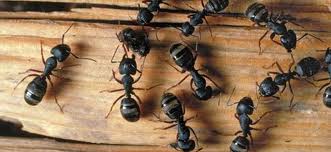While most western medical doctors may prefer to distance themselves from the dubious fields of homeopathic, alternative and eastern medicines, it is nevertheless true that many western pharmaceutical medications were developed from plant compounds that have been used by eastern medical practitioners for centuries. This should not come as a surprise, as it is common knowledge that even the most advanced medicines are derived from plants. Plants are useful for treating physical illnesses because they are among the oldest of earth’s organisms, which means that humans have retained many of the same bodily chemicals that are present within our ancient plant precursors. Considering that insects are nearly tied with plants for being the oldest living organisms on the planet, it seems that useful medicinal therapies could be derived from insect chemistry as well. While insects have proven to be useful for developing medicines in many parts of the world, researching insects for their usefulness in medical science has only just begun in the western world. Ancient palm leaf literature that dates back to the fifth century BC mentions numerous insect recipes that modern medical researchers have long ignored. However, recent studies in the west provide good evidence to suggest that some of these insect-based medicines may be quite effective today. In an effort to develop new medicines, a group of zoological researchers visited several villages in India in order to document how insects are prepared and applied for the treatment of human medical conditions.
The Palm Leaf Manuscripts mentioned velvet ants as being useful for treating inflammation. These ants are ground into powder before being mixed into a “nerve-tonic” that shows potential as an effective antispasmodic. This powder is also mixed with honey before being consumed by patients to treat paralysis. When the ant-powder is mixed with beeswax, it is applied topically to relieve inflammation. The common household black ant and the Dorylus labiatus ant species are both used to strengthen the nervous system and to restore immune health. One of these two ants, or both, are kept within a vat of honey for two weeks before being consumed by lethargic patients. Lastly, the eggs of weaver ants have been used with success for thousands of years to treat a variety of ailments including tetanic fever, ear pain, high fever and malarial fever. The eggs are also reportedly an effective aphrodisiac. The medicinal benefits of weaver ants and their eggs may be due to an antibacterial chemical secreted by the insects during nest building.
Would you be willing to try an alternative form of medicine that contains insects over a pharmaceutical medicine for the treatment of a mild condition?

